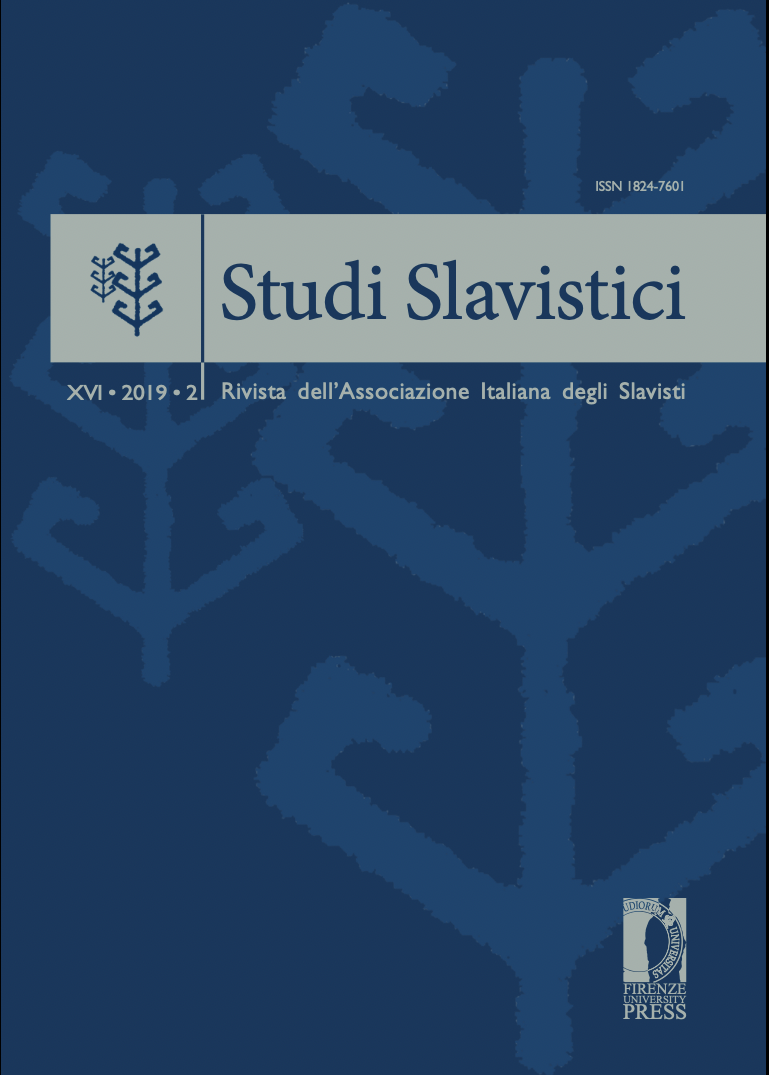Articoli
Most read articles by the same author(s)
- Giovanna Brogi Bercoff, Maria Grazia Bartolini , Giovanna Siedina, Foreword , Studi Slavistici: Studi Slavistici XVIII (2021) 2
- Maria Grazia Bartolini, Metafore spaziali della conoscenza di sé nei dialoghi di H.S. Skovoroda. Fonti patristiche , Studi Slavistici: Studi Slavistici V • 2008
- Maria Grazia Bartolini, “Manlier than Many Men”. Images of Female Sanctity in Simeon Polockij’s Court Sermons , Studi Slavistici: Studi Slavistici XIII • 2016
- Maria Grazia Bartolini, “Glava že vsěm Biblïja”. Biblical Quotations in the Literary Works of H.S. Skovoroda (1722-1794) between Slavic Orthodox Tradition and Baroque Culture , Studi Slavistici: Studi Slavistici IX • 2012


